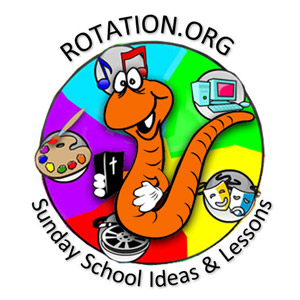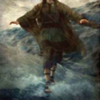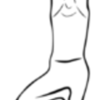A Walk on Water
Lesson Set
Summary of all material in this Rotation:
- Bible Background
- Art: Create watercolor pictures depicting the story.
- Games: Play a quiz game using the game wheel and the game board.
- Cooking/Science: Do a science experiment and make Baked Alaska (baked ice cream)
Note: This was a Rotation done during the summer, a time when we offer just 2 workshops a Sunday during 3-week Rotations. Students were gathered into two groups:
➢ Those going into 2nd grade through those going into 4th grade.
➢ Those going into 5th grade through those going into 7th grade.
Scripture Reference:
Matthew 14:22-33
Key Verse:
“Take courage! It is I. Don't be afraid.” Matthew 14:27b (NIV)
Workshop Objectives — After completing this Rotation, participants will be able to:
- Name that the story is found in the New Testament.
- For 3rd grade and up: Locate the story in Matthew. Identify the four Gospels.
- Re-tell the story in his/her own words.
- Recognize “faith” as an action word – to trust in God, to be certain Jesus is with us always.
- Discover that Jesus wants us to build our faith in him. Discuss ways to do this.
- Explore the concept that life can give us difficult times; When we focus on God, our faith is strengthened.
Story Background - The setting for our story
The Sea of Galilee is actually a heart-shaped lake about 14 miles long and six miles across. It is located in the province of Galilee about 60 miles northeast of Jerusalem and 27 miles east of the Mediterranean Sea. The river Jordan enters it at its northern end and passes out at its southern end. The water of the lake is quite deep, sweet, cool and transparent and the beach is very pebbly and sparkly. The sea is full of fish even still today, just as it was during Jesus’ time.
The Sea of Galilee is sometimes also called the Sea of Tiberias (named for the city on its shore), and the Lake of Gennesaret from the beautiful fertile plain located to the northwest. Jesus spent most of his public life in the environment of this sea. The surrounding region was then the most densely populated in all of Palestine. Nine very populous cities stood on the very shores of the lake. The Sea of Galilee was a very active center of life during this time.
Situated in a basin surrounded by a wall of mountains, the Sea of Galilee is particularly susceptible to frequent, sudden, violent storms. Cool air from the Mediterranean is drawn down through the narrow mountain passes and clashes with the hot, humid air lying over the lake. Indeed the lake was notorious for its storms; they literally came out of the blue with shattering and terrifying suddenness, often when the sky was perfectly clear.
The disciples face a challenge
Our story takes up just after Jesus has miraculously fed over 5000 people with two fish and five loaves of bread. Jesus has dismissed the crowds and has sent the disciples to cross the lake by boat. He would presumably join them later. Jesus meanwhile, goes into the hills to pray alone.
It is not clear what time the disciples left for their trip but it is evident from the story that by the time night fell, they were far away from land. Soon they found themselves in trouble, facing a sudden strong storm with high winds and heavy waves. If this sounds familiar it is because it had happened before – see Matthew 8:23-27. But the last time they’d been caught in a boat tossed by a stormy sea, Jesus had been in the boat with them. This time, the disciples were alone, or so they thought, to fight against the raging waters.
In their need, Jesus appears – walking on water
“During the fourth watch of the night, Jesus went out to them, walking on the lake” (Matthew 14:25).
In Bible times a night was divided into four watches, starting at 6 p.m. Each watch consisted of three hours, so the fourth watch would have been between 3 and 6 a.m. By this time the disciples surely had to be exhausted. No wonder they reacted in terror when Jesus approached, walking toward them on the water. They thought they were seeing a ghost! “It had not occurred to them that he could know their plight, walk on water to come to them or catch up to them in a storm! To their credit, however, the fear issue seems to be solved once they recognize that their teacher is with them. They knew him well enough to know that if he was there, he would bring them through their storm” (Keener).
Jesus responded to the disciples fear, telling them, “Take courage! It is I. Don't be afraid.” (Matthew 14:27b) The “It is I” reminds us of the way that God identified himself to Moses out of the burning bush with: “I AM” (see Exodus 3:14). “Jesus, the I AM, came with unexpected help and encouragement during the disciples’ time of desperate need” (iLumina).
Peter’s walk on water
Peter’s response to Jesus shows Peter’s impulsive manner: “Lord, if it’s you,” Peter replied, “tell me to come to you on the water.” (Matthew 14:28) Jesus answers simply, “Come.”
Was Peter testing Jesus’ power by asking him, Lord is it you? Or was Peter just trying to do as all good disciples did? (Devoted disciples wanted to emulate their masters.) Why didn’t the others test their prowess at water walking?
Then Peter got down out of the boat, walked on the water, and came toward Jesus. But when he saw the wind, he was afraid and, beginning to sink, cried out, “Lord, save me!” (Matthew 14:29b-30)
Of course, Jesus saved Peter. And gently chided him with, “You of little faith, why did you doubt?”
When everyone had climbed back into the boat, the wind immediately died down. The disciples now worship Jesus and call him the Son of God. “When we recognize Jesus’ works, thereby learning more of his character, the appropriate response is to worship him. This will deepen our relationship of faith with the Lord we love” (Keener).
Trusting Jesus – what is our focus?
This story contains miracles, however, we won’t focus on the miracle. Rather the focus needs to be on focus! Where is our focus? Faith for us means believing in Jesus even though we can’t see him. Perhaps Peter’s difficulty was that he took his eyes off of Jesus. The word used by Jesus to mean doubt “connotes vacillation, not skepticism” (Boring). Peter looked around him at what was happening – waves, wind, a nasty storm! It parallels how we tend to deal with life: we do fine, “as long as we keep our eyes off of ourselves and our own efforts. But the moment we take our eyes off of Christ and focus on the difficulties nipping at us we will begin to sink” (Patterson). Keeping our focus on God is relatively easy when all is going well. It is keeping our focus on God when things are rough (which inevitably happens) – that is the challenge.
Faith - an action word
How can we keep focused on God? By growing our faith? Our faith grows as we exercise it – in rough times or in good times. Faith should be considered a verb because faith requires action on our beliefs. Faith grows out of our relationship with God. “Our faith may be more infantile than Peter’s if we have never even tried to step out in obedience to Jesus’ commands or direction for our lives; many of us have less practice walking in faith than two-year-olds have walking physically” (Keener).
Encourage students to talk about ways our faith can grow – by being in community with other faithful people, by reading the Bible, by praying… Jesus wants us to build our faith in him!
Story questions
Was Peter’s problem sinking, a lack of faith?
Or was it faith that brought Peter out of the boat to start his walk on the water?
Is God leading you to get out of the boat?
What helps you to have faith?
What makes you sink?
When you start to sink do you tend to reach out to Jesus or try to make it on your own?
Resources:
- Boring, M. Eugene. The New Interpreter’s Bible: Volume 8. Nashville: Abingdon, 1995.
- G.R.E.A.T. Adventure Dream Team at State Street United Methodist Church, Bristol, VA. “Background Information: Sea of Galilee– Jesus Calms the Storm.” 2000. (Galilee info)
- iLumina Gold Premium. CD-ROM. “Life Application Commentary: Matthew.” Wheaton, IL: Tyndale House, 2006.
- Keener, Craig S. Matthew (IVP New Testament Commentary Series). Downers Grove, IL: InterVarsity Press, 1997.
- Patterson, Bob E. Discovering Matthew. New York: Guidepost Books, 1985.
A set of workshops written by folks from:
First United Methodist Church
120 S. State Street, Ann Arbor, MI 48104
Copyright 2008 First United Methodist Church, Ann Arbor, MI. Permission to copy materials granted for non-commercial use provided credit is given and all cited references remain with this material.







